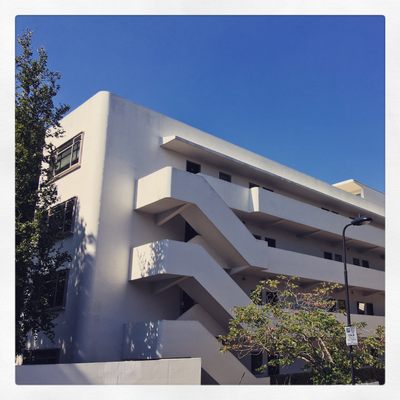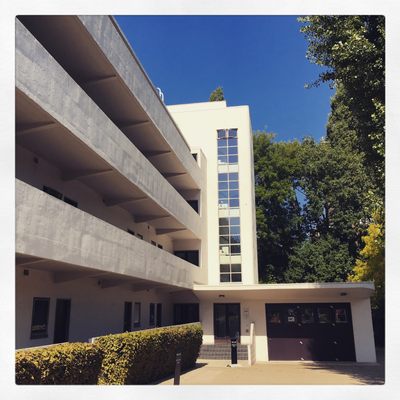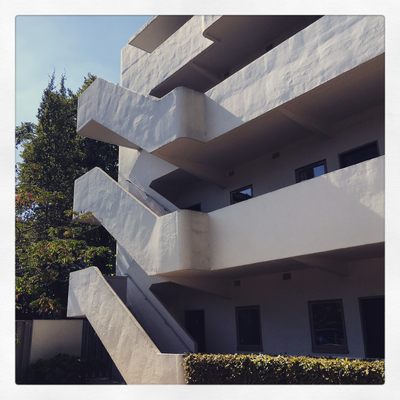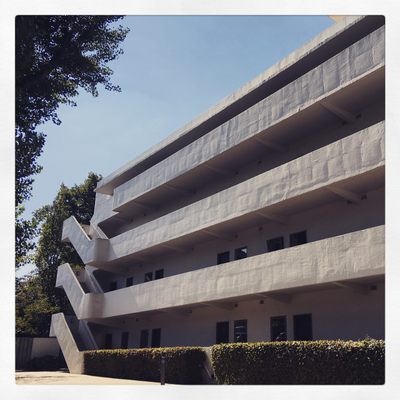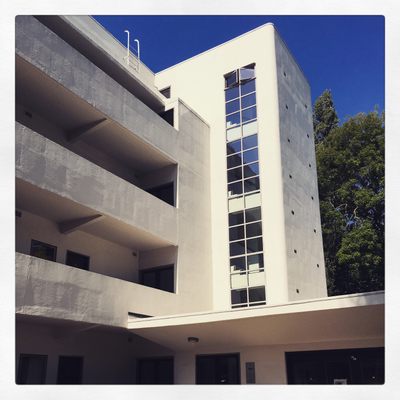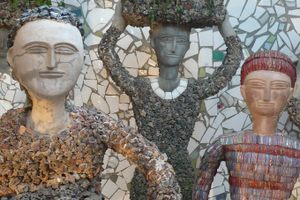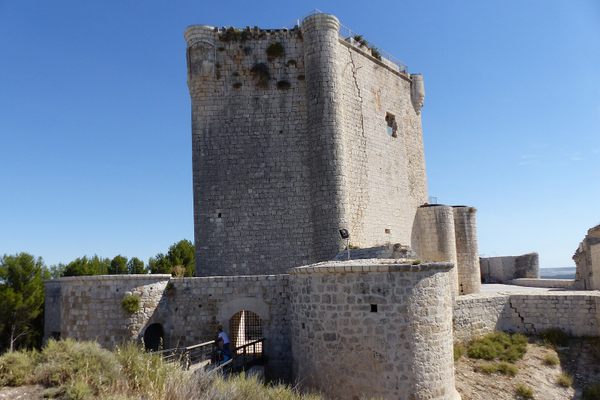About
Built in 1934 in London’s affluent Belsize Park, the Isokon apartments were not only an uncompromising exercise in architectural modernism but also an experiment in a new type of living.
The block was commissioned by Jack and Molly Pritchard, who wanted a new type of housing free of bourgeois norms, in order to foster an egalitarian community appropriate for a new world. Architect Wells Coates used reinforced concrete for his design (the first time the material had been used in a British domestic building), setting the structure radically apart from the surrounding brick and stone Edwardian architecture. The choice of material was a reflection of the Pritchards’ social vision, connotative as it was with Continental mass social housing.
The block’s name came from Coates’ use of both isometric perspective and constructivist aesthetics. Its 32 flats were whitewashed and cement-rendered, with communal balconies to encourage social interaction and exchange. The vision was strictly egalitarian and class-less. An Isobar restaurant on the top floor would supply meals to each apartment via dumb waiters, freeing the inhabitants to socialize, think, discuss, and work.
Isokon became a hub for modernist thought and design in London. Famous designers and teachers from the Bauhaus school in Germany, including architect Walter Gropius and designer Laszlo Moholy-Nagy, sought refuge there as the Nazi regime came to power. Fellow Bauhaus teacher Marcel Breuer designed modernist furniture for the flats, using new industrial materials such as plywood. Thinkers, writers, artists, and intellectuals all came and went during this period.
It was this transitory, international nature that lent itself so readily to spying, and it is estimated that between the 1930s and 1960s, some 30 Soviet agents lived at Isokon. Europe’s liberal intelligentsia were engaged in a war of ideas with the rising tide of fascism, and many Isokon residents looked towars the Soviet Union to satisfy their ideal of pacifism and socialism. Pritchard himself had embraced communism whilst studying at Cambridge University.
An Austrian Isokon resident, Arnold Deutsch, was revealed to be a Soviet spy, and recruited the famous "Cambridge Five" spy ring, often from a bench in nearby Regent’s Park. The building’s opening was photographed by Edith Tudor Hart, herself a Soviet agent.
The novelist Agatha Christie moved into Isokon in 1941 with her husband, archaeologist Max Mallowan, when her Cornish house was requisitioned by the army and her London property too exposed to bombing. It has been postulated that much of the inspiration for her novels of spying and intrigue during this period came from her experiences at Isokon.
The block fell into disrepair in the late 20th century, before being restored as private residences. Today the former garage is a gallery telling the story of Isokon, including its spying connections. The gallery also preserves two original rooms.
Related Tags
Know Before You Go
The Isokon Gallery is open from 11 a.m. to 4 p.m. on weekends from March to October. Each September during London Open House, visitors can also get the rare chance to tour inside the flats.
Community Contributors
Added By
Published
September 13, 2018
